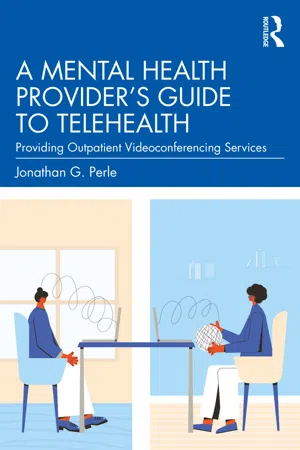Eye Strain
Eye strain refers to the discomfort or fatigue experienced in the eyes due to prolonged use of digital screens, such as computers, tablets, or smartphones. Symptoms may include dry eyes, blurred vision, and headaches. To reduce eye strain, it is important to take regular breaks, adjust screen brightness and contrast, and ensure proper lighting in the workspace.
5 Key excerpts on "Eye Strain"
- eBook - ePub
- A. Ward Gardner(Author)
- 2013(Publication Date)
- Butterworth-Heinemann(Publisher)
...Eye Strain is a somewhat unfortunate expression; it is more appropriate to speak of ‘visual discomfort’ since the sort of symptoms which people complain of are eyes which water excessively, aching eyes, headaches and difficulty in focusing. Since these are actual conditions which the sufferer is experiencing, they cannot be denied! A number of studies have been carried out assessing the visual condition of VDT operators and other office workers doing more traditional work. 5, 6 They have consistently shown a higher incidence of Eye Strain amongst the VDT operators. What is not easy is diagnosing the cause of eye discomfort. It is caused by an interaction between factors relating to the people, and factors relating to the working environment. The personal factors include refractive error, convergence insufficiency, accommodation fatigue and binocular instability. These are helpfully discussed in Stone, 7 and at more length in Duke-Elder. 8 Factors in the working environment affecting visual discomfort include the task, the screen, the keyboard, the document and the lighting. Fig. 15.1 provides a diagrammatic summary of these and the personal factors. Fig. 15.1 Factors affecting visual performance, comfort and fatigue, indicating some desirable characteristics. If the VDT operator has some form of disability, as mentioned above, of which they are unaware, this may become apparent when they first begin to use VDTs. This is because they are using their eyes to do a task which they have not done before, and the task has uncovered the existing but unnoticed weakness. This has proved to be the situation in many cases which Human Sciences and Advanced Technology Research Centre (HUSAT) has seen. Such events demonstrate the importance of providing eye tests of all people who are to use such equipment, to ensure that their eyesight is adequate, or, if not, to provide them with the necessary correction by means of spectacles or contact lenses to carry out the job concerned...
- eBook - ePub
A Mental Health Provider's Guide to Telehealth
Providing Outpatient Videoconferencing Services
- Jonathan G. Perle(Author)
- 2021(Publication Date)
- Routledge(Publisher)
...While research has been variable, some have also suggested the use of blue-light filtering glasses to reduce ocular challenges, including eyestrain and headaches. References Agarwal, S., Goel, D., & Sharma, A. (2013). Evaluation of the factors which contribute to the ocular complaints in computer users. Journal of Clinical and Diagnostic Research, 7 (2), 331–335. https://doi.org/10.7860/JCDR/2013/5150.2760. American Optometric Association (AOA). (n.d.). Computer vision syndrome. Retrievedfrom www.aoa.org/patients-and-public/caring-for-your-vision/protecting-your-vision/computer-vision-syndrome. Cook, C., & Burgess-Limerick, R. (2003). Guidelines for computer workstations. Ergonomics Australia, 17 (1), 19–37. Dabrowiecki, A., Villablobos, A., & Krupinski, E. A. (2019). Impact of blue-light filtering glasses on computer vision syndrome in radiology residents: A pilot study. Journal of Medical Imaging, 7 (2). https://doi.org/10.1117/1.JMI.7.2.022402. Lawrenson, J. G., Hull, C. C., & Downie, L. E. (2017). The effect of blue-light blocking spectacle lenses on visual performance, macular health and the sleep–wake cycle: A systematic review of the literature. Ophthalmic and Physiological Optics, 37 (6), 644–654. Maheu, M. M. (2020, June 11). Zoom fatigue: What you can do about it. Telebehavioral Health Institute. Retrieved from https://telehealth.org/blog/zoom-fatigue-what-it-is-what-you-can-do/. Occupational Safety and Health Administration (OSHA). (n.d.). Computer workstations eTool. Retrieved from www.osha.gov/SLTC/etools/computer workstations/positions.html. Sanaeinasab, H., Saffari, M., Valipour, F., Alipour, H. R., Sepandi, M., Al Zaben, F., & Koenig, H. G. (2018). The effectiveness of a model-based health education intervention to improve ergonomic posture in office computer workers: A randomized controlled trial. International Archives of Occupational and Environmental Health, 91 (8), 951–962. https://doi.org/10.1007/s00420-018-1336-1. Shikdar, A. A., & Al-Kindi, M...
- eBook - ePub
Thriving in Chaos
Two Minute Stress Management Tools for Anxiety, Stress Relief and Increased Confidence
- Sandy Dow(Author)
- 2017(Publication Date)
- Dow Effect Coaching(Publisher)
...Eye Yoga Studies show that Eye Strain and visual disturbances occur in 50-90 percent of computer workers. That is not including the time we spend looking at the TV, phones or surfing the internet after work. Our fatigued eyes can cause dryness, migraines, blurred vision, a sore neck and light sensitivity. As well, science has confirmed that the blue light emitted from screens can shift our body’s natural clock and negatively impact sleep. Here is an exercise your tired eyes will thank you for. Try this: Rub the palms of your hands together briskly for about 30-60 seconds until you can feel heat building. Then, prop your elbows on a desk or some pillows, and cup the palms of your hands on top of your cheekbones and over your eyebrows where you have many acupressure points, gently press on your eyes. As you do this, your fingers will land on your forehead, and you can slightly pull up on the skin of your face. Once your eyes are covered, you can open them and adjust your hands to block any light. You will be giving your eyes extra rest as they gaze into the darkness. Stay in this pose for a minute or two, then make it even better by releasing the muscles in the eyes, jaw, face, tongue and neck as if you could let them hang. You can also use this technique on other needy parts of your body. As you rub the palms of the hands together you are building energy. You can then put that energy to good use by placing your hands anywhere you would like to relax – the neck, tops of shoulders and over internal organs are all good spots. Put your attention on the area being treated, to boost the benefit, then watch out for the yawning and eye watering and that could happen as your body releases tension....
- eBook - ePub
Designing EEG Experiments for Studying the Brain
Design Code and Example Datasets
- Aamir Saeed Malik, Hafeez Ullah Amin(Authors)
- 2017(Publication Date)
- Academic Press(Publisher)
...However, the appearance of such visual or mental fatigue during the learning process cannot be ignored. 19, 20 In the learning process, if the learners feel visual strain and/or heavy head due to watching the S3D content, their focus and concentration will be lost. Thus, it will cause distraction to the attentional resources that are necessary for perceiving new knowledge. Visual fatigue and discomfort are not only issues with S3D but also occur with extensive use of computer screens or any visual display, such as TV. It has been investigated that the excessive use of display screens may cause Eye Strain, headache, visual discomfort, fatigue, and other negative effects. 21, 22 The reason for these symptoms with normal visual display is the screen low refresh rate. If the refresh rate is too low, it will cause screen flickering. Thus the flashing of light may induce negative effects, such as photosensitive seizures. 23 It has been reported that an individual may experience motion sickness in front of a large visual display, 24 which may be due to rapid eye movements. In case of S3D, the symptoms of visual discomfort and fatigue are studied using subjective and/or physiological measures. 2, 10, 13, 25 – 27 It is one of the most frequent complaints of S3D viewers and considered an important dimension of the quality of experience of S3D. The reason for this widely studied factor is obvious as it concerns the health and safety of the viewers. 2 Visual discomfort is the perception of the degree of annoyance during performing a visual task and can be measured as suggested by Li et al. 2, to ask the viewers to report his/her experience. However, visual discomfort may disappear quickly if the participant is distracted or closes his/her eyes. In addition, visual fatigue is differentiated by Lambooij 27 from visual discomfort, i.e., visual fatigue is the decrease in performance of visual system due to the physiological changes...
- Giuliano Franco(Author)
- 2020(Publication Date)
- Youcanprint(Publisher)
...In the printers’ shop, Ramazzini also observed that another danger loomed on the workers who «are almost constantly seated while select the metal types from their boxes and set up the copy […]». They «gradually contract weakness of the vision, and when their eyes are not strong to begin with, they are afflicted with dimness of sight, suffusions and other diseases». He was not generous with preventive suggestions, but it did not lack to provide very reasonable advice: «they should turn their gaze away from the work» from time to time. Over the past few decades, technological advancements have led to an increasing share of the workforce in office-based occupations. The introduction of new informatics tools and the application of new forms of work organisation have stimulated interest in health problems related to the use of video terminals and similar devices. Many millions of visual display workstations exist, where different types of employees work (office work, control rooms, call centre operators, remote and home workers) 359. These activities involve, in addition to organisational risk factors, which can produce forms of psychosocial discomfort, a possible risk of overload of the upper limb musculature and risks for the eyes related to visual effort. The literature does not prove the existence of specific eye damage associated with the use of video terminals 360. However, these workers may experience a series of manifestations attributable to ocular-visual discomfort and visual fatigue syndrome 361. It is hardly necessary adding that the use of portable devices (smartphones and tablets) can involve a similar visual effort, even if the investigation on the risks for eye health deriving from the prolonged use of these tools did not yet offer reliable results. As for the professional application of video terminals, there are specific rules that apply to work activities involving the use of such equipment...




